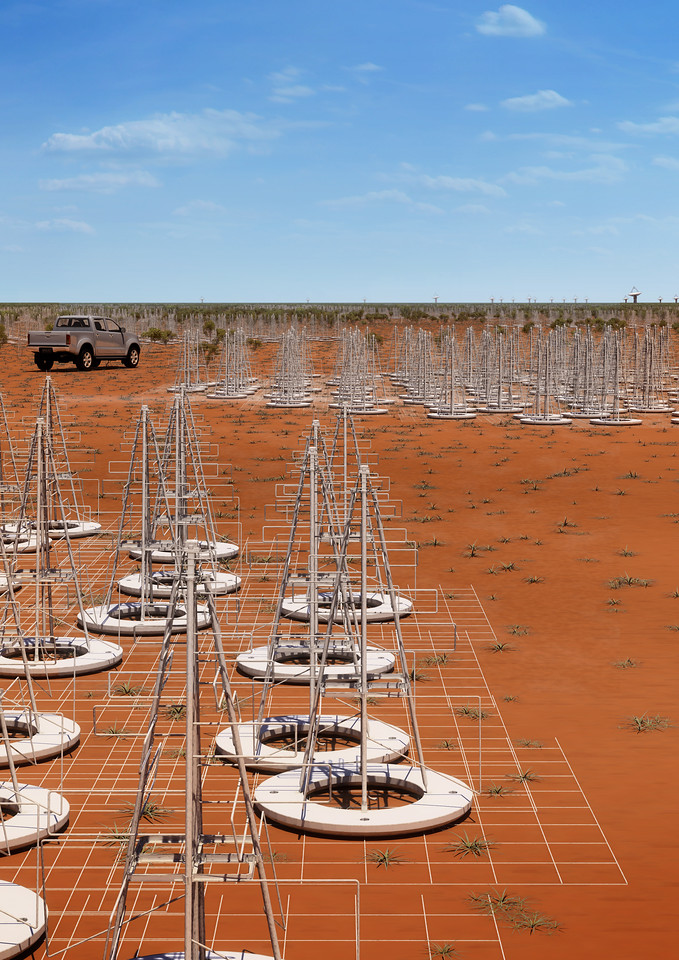Giant satellite gets set
 After years of design and prototyping, experts are ready to build the Square Kilometre Array (SKA) in Western Australia – set to be the world’s largest telescope.
After years of design and prototyping, experts are ready to build the Square Kilometre Array (SKA) in Western Australia – set to be the world’s largest telescope.
The SKA will consist of 130,000 individual radio antennas, along with associated electronics, to be built and spread over thousands of square kilometres at CSIRO’s Murchison Radio-astronomy Observatory (MRO), approximately 800 km north of Perth.
It will work in tandem with an array of 197 dishes located in the Karoo in South Africa, north of Cape Town.
The SKA will be one of the world’s largest science facilities, designed in collaboration with 14 different nations, with a mission to explore the entire history and evolution of the Universe, and even make advances in fundamental physics.
Preparatory work in Western Australia has accelerated in the last few years, culminating in a successful System Critical Design Review conducted by the SKA Organisation, located near Manchester, UK, which coordinates the activities of the global collaboration.
“We have now passed the last major technical milestone before the international community commences construction of the SKA, with a budget of 1.87 billion euros over its first ten years,” said Professor Steven Tingay from the International Centre for Radio Astronomy Research (ICRAR).
“Over the last seven years, the Commonwealth Government has supported my team with $10.1 million to reach this milestone, and a significant fraction of these funds has helped Western Australian industry to get ready for SKA construction contracts, especially around Geraldton and the State’s Mid-West.”
Alongside the engineering preparations, scientific preparations continue apace, with big discoveries in astrophysics led by local astronomers using the SKA precursor telescopes ASKAP and the Murchison Widefield Array (MWA), over the last decade.
The search for 13 billion-year-old stars, the discovery of missing matter in the Universe, and galaxy surveys of unprecedented scale feature among fundamental advances from the precursor telescopes, ready to be taken to the next level with the SKA.







 Print
Print